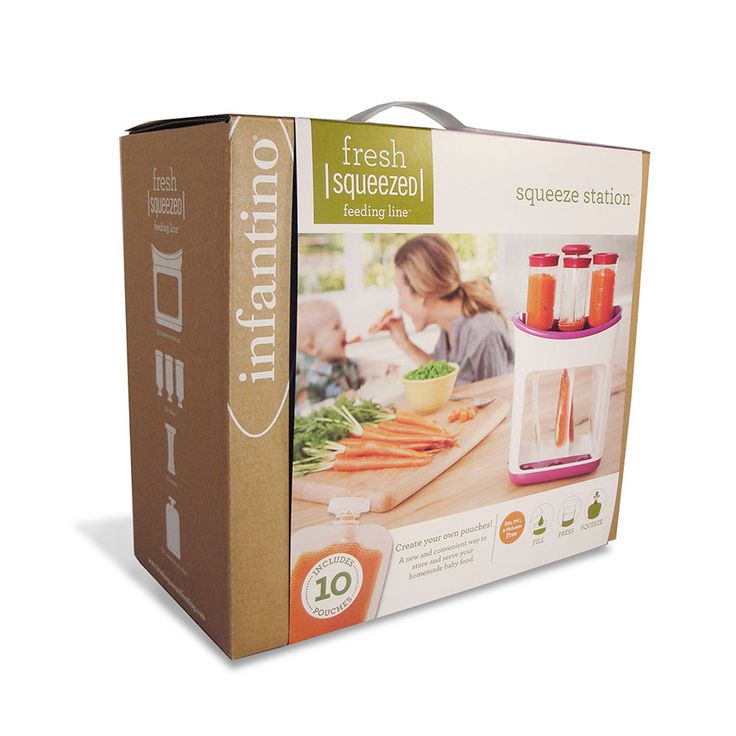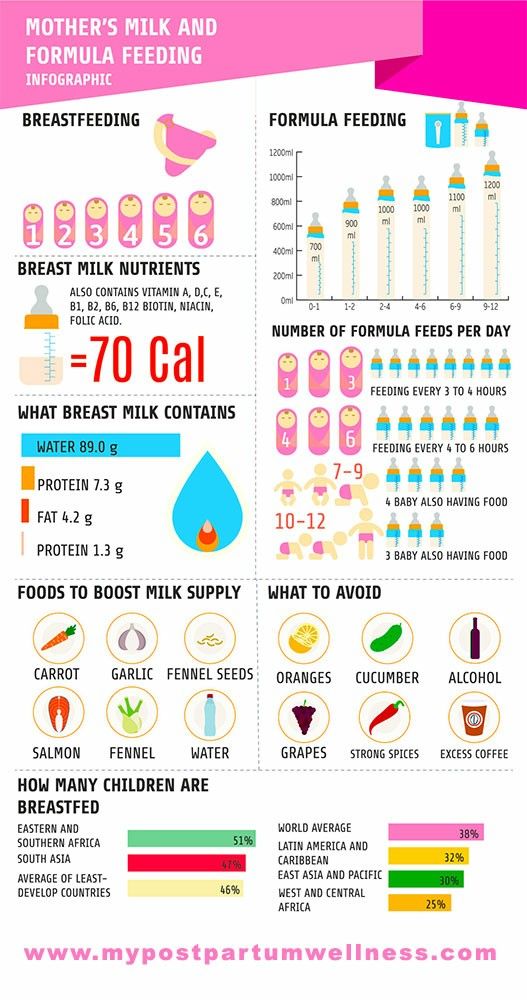Nestle baby feeding guide
Baby Feeding and Nutrition: The Guide
0-6 Months
Article
How will you feed your newborn?
8 mins to read Jul 31, 2017
It’s a common and important question for any parent or parent-to-be, and it’s never too early to start making decisions about baby nutrition. You can turn to this guide to help prep your infant feeding plan and find out valuable facts about baby nutrition. Constantly craving information? Add to the info below with guidance on first-year feeding from the Canadian Paediatric Society.
Breast milk is best
It’s the perfect food for a newborn baby in that it’s nutrient-rich,¤ it can change feeding by feeding to meet the nutritional needs of your baby as they grow, and it’s naturally produced to give your baby the best start in life.
Breastfeeding is great for you as well. It can help you return to your pre-pregnancy weight faster and help create an intimate bond between you and your baby.
Health Canada recommends that for the nutrition, immunologic protection, growth, and development of infants and toddlers, you breastfeed exclusively for the first six months, and you sustain it for up to two years or longer with appropriate complementary feeding.1,2
Learn more about the benefits of breastfeeding now.
Your infant feeding plan
How you feed your baby is a very personal decision. Here’s what you should consider while you personalize a baby nutrition plan:
- Base it on the right information, advice and support from your healthcare professional and your family.
- Know that breast milk is the ideal food for baby nutrition during the first six months of life.
- Look over the variety of infant formulas available, should you choose to introduce one.
As you get ready to give your baby all the nourishment they’ll need by developing an infant feeding plan, consider the following for yourself:
As you get ready to give your baby all the nourishment she’ll need by developing an infant feeding plan—consider this:
1.
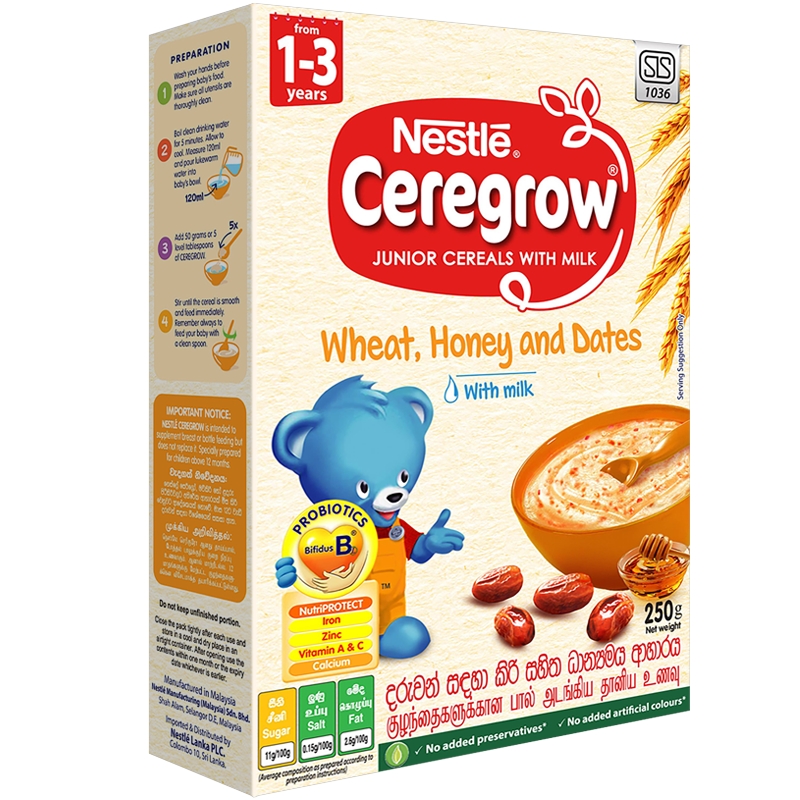 Healthy Mom, healthy Baby
Healthy Mom, healthy Baby- Eat healthy (and enough. Newborns feed every 2-3 hours, you gotta eat, too).
- Hydrate.
- Get lots of rest.
- Call on family and friends for help around the house (or just let the chores wait).
- Keep "Eating Well with Canada's Food Guide" on your fridge.
2. Learn about breastfeeding
Ready, set, breastfeed! Make it a fulfilling experience for both of you by arming yourself with helpful hints, as well as tips on how to cope with challenges.
3. Get right to it!
- Breastfeed ASAP after birth (within 30 to 60 minutes is recommended if you are healthy enough to do so).
- Hold your baby to skin-to-skin often to promote successful breastfeeding initiation.
- Confirm your hospital supports 24-hour rooming-in (so you never keep your hungry baby waiting).,
4. Know your supplementing options for optimum baby nutrition
- Your choices include breastfeeding (ideally), supplementing breast milk with infant formula or feeding with infant formula only.

- Health Canada recommends cow milk-based commercial infant formula as the only safe and nutritious alternative to breast milk.1,2
- Canadian healthcare experts recommend cow's-milk based infant formula from birth until 9 to 12 months of age.1,2
- Iron-fortified infant formula offers a complete source of nutrition for your baby during the first year (The Canadian government actually regulates the composition of infant formula).
- Infant formulas contain the recommended amounts of fat, carbohydrates, protein, vitamins, and minerals needed for baby's growth and development.
- You have several choices of infant formulas – always speak to your doctor before making changes to what you feed your baby.
When can my baby have cow's milk?
Whole (3.25 percent) cow's milk isn't recommended as a part of a baby nutrition plan until the 9- to 12-month mark for these reasons:
Iron should be part of a baby nutrition plan
As you strengthen your iron knowledge with the info below, know that your baby’s initial iron reserves may start to run low at about the 6-month mark1.
Why iron?
- It’s a vital nutrient that contributes to the normal growth and development of your baby.
- It’s essential in building red blood cells that transport oxygen throughout her little body.
How does a baby get iron?
- Healthy full- term infants are born with iron stores, which meet their needs until about six months of age.
- Your own iron-rich diet will help ensure that these stores stay topped up.
- Breast milk will provide your baby with adequate iron for those first 6 months1.
- Should you choose to supplement or exclusively formula feed, choose an iron-fortified formula.
- Introduce iron-rich solid foods after the 6-month mark1.
Wait, solid foods?
- Yep, your baby will be ready to start eating solid foods by around six months.
- The introduction of foods into a baby nutrition plan should be a steady progression of single ingredients and portion sizes between six and 12 months of age.
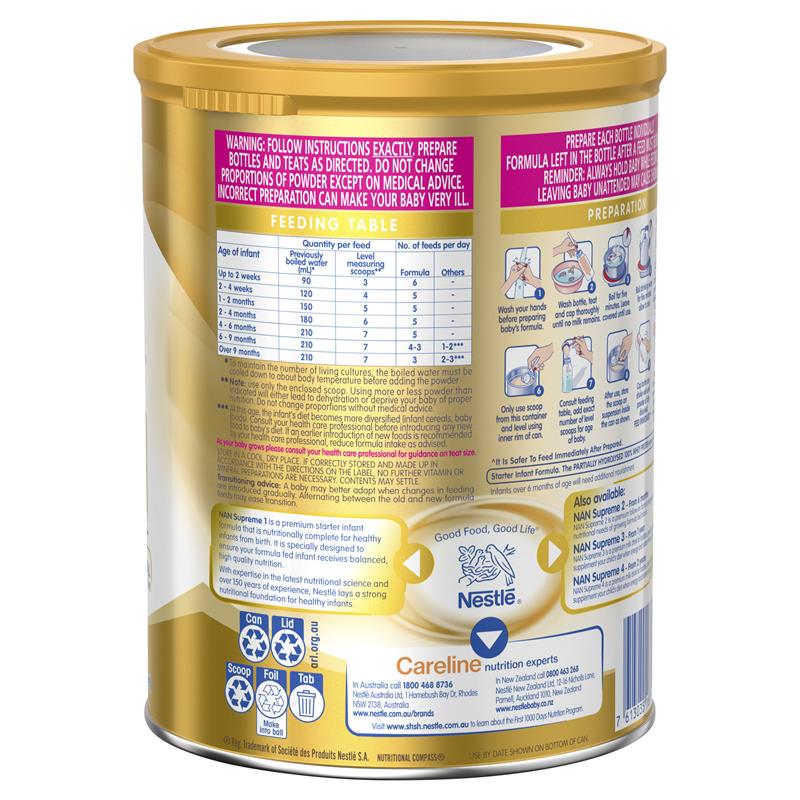
- Health Canada recommends baby’s first foods be iron-rich.1
- Healthy iron-rich options are meat, meat alternatives and iron-fortified baby cereal.
- Babies should be offered iron-rich foods two or more times a day.1,2
- Still not sure how to meet your baby’s iron needs once she’s accustomed to solid food? Just follow the baby nutrition recommendations in the chart below.3
Ironclad Reminders
- Breastfeeding is ideal ¾ and nature’s way of delivering iron to your baby for the first six months
- Always choose an iron-fortified infant formula if you decide to supplement or exclusively formula-feed
- Introduce iron-rich foods at around six months of age whether you're breastfeeding or formula feeding (just talk to your baby's doctor, first)
- Avoid whole cow's milk until at least nine to 12 months of age as it is a poor source of iron
- Be aware of the myths and know there is no scientific data that shows a correlation between iron-fortified formulas and gastrointestinal problems such as colic, constipation and fussiness
- Store all vitamin supplements that contain iron, including your prenatal and postpartum vitamins out of children's reach ¾ large amounts can be harmful to children
- If you suspect excessive iron intake, call your doctor or visit your local emergency room immediately.

Talk to your doctor about your baby’s iron needs and iron deficiency. Iron deficiency can cause your baby to be less active than usual, and perhaps even develop more slowly.
DHA and ARA
You’re probably aware of these two fatty acids that offer health benefits: DHA (you know it as docosahexaenoic acid, right?), an omega-3 fat, and ARA (arachidonic acid, of course), an omega-6 fat.
What makes them so important to baby nutrition?
Experts agree that DHA and ARA are essential for healthy brain and eye development4,5 (they actually accumulate in the brain and eye tissue of your baby before birth).
The earlier you can start getting DHA, a major brain-nourishing nutrient, the better—up to 90% of your baby’s brain growth will be complete by age three6.
How do I get them?
Your body will produce DHA and ARA from two essential omega-3 and omega-6 fatty acids: alpha-linolenic (ALA) and linoleic acid.
It all starts though, with your healthy diet—so eat foods rich in DHA5, like:
- Fatty fish: Atlantic salmon, herring, mackerel, sardines and cod are your best DHA bets (in that order).
- Omega-3 eggs fortified with DHA: A great substitute if you’re not a fish fan.
- Flaxseed and walnuts: Decent sources, yes, but you’ll only get a small amount of DHA once your body processes these.
How does my baby get them?
These nutrients are passed through your breast milk.
Your baby’s body produces them the same way yours does, from alpha-linoleic and linoleic acid that are added to all infant formulas. These essential fatty acids are also found in a variety of solid foods5. Plus, most infant formulas in Canada also contain DHA and ARA to support baby’s normal physical brain and eye development. Your healthcare professional can answer any more of your questions about DHA and ARA.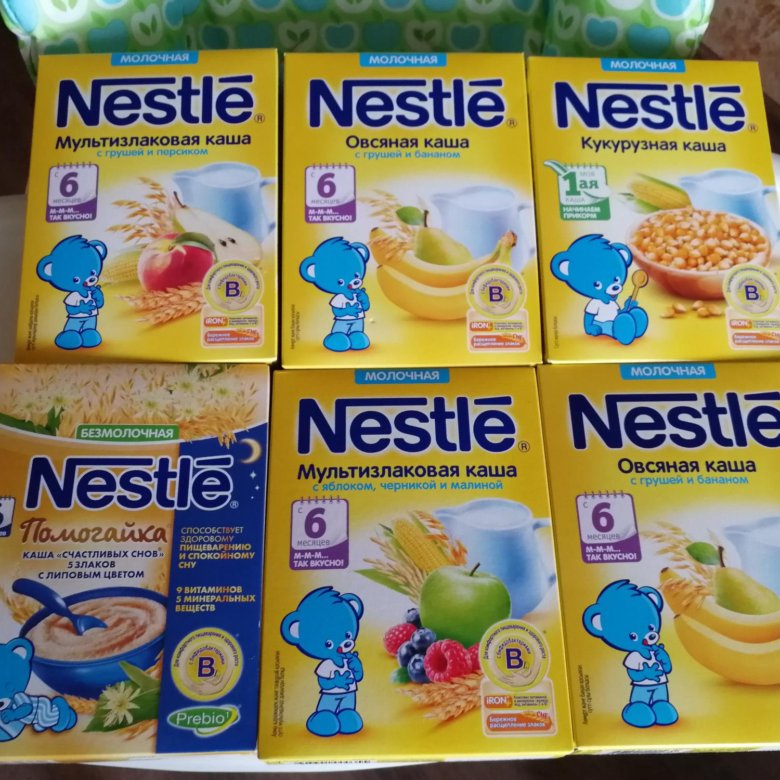
The Pros of Probiotics: Developing A Baby Nutrition Plan for Bolstering A Baby Immune System
Ah, yes, another miracle of nature—your baby’s developing immune system, it works hard as a:
- Shield from sickness and infection.
- Main support in her growth and overall health.
- Key in maintaining natural protective barriers.
The skin is obviously most important for protection, but another important barrier is the digestive tract, which is home to:
- 80% of the body's immune cells.7
- The gut flora, a delicately balanced community of around 500 different kinds of bacteria.
In a healthy digestive system, part of the task of keeping baby’s immune system and body safe from illness relies on good bacteria (or bacterial cultures)—they can also help to balance potentially harmful bacteria. One way to help support this protective barrier is to increase the levels of good bacteria in your baby’s digestive tract.
Recent research has shown that breast milk naturally contains probiotics including Bifidobacteria8,9 that:
- Are good bacteria
- Make up to 90% of the naturally occurring bacteria found in the gut flora of healthy, breastfed babies.10
- Aid in building a healthy digestive tract flora.
- Help with the healthy development of a strong immune system.11,12
These facts alone make it easy to see why breast milk is an ideal source of probiotics for your baby.
What are probiotics?
The meaning of “probiotic” is literally “for life”.
Probiotics are live, safe microorganisms, found in food and you’ll also hear them called “natural cultures” or “good bacteria”.
They offer specific health benefits, like aiding in digestion and supporting the immune system, when taken in adequate amounts.13
The probiotic Bifidobacterium lactis or B. lactis is a common type of Bifidobacteria and is recognized by Health Canada as a probiotic that contributes to baby’s healthy digestive tract flora.14 B. lactis has also been extensively studied for its baby nutrition benefits in infants.
Research suggests that, when ingested, probiotics only temporarily reside in the digestive system11,13,14 and continued, daily consumption of B. lactis is necessary for health benefits.14,15
B. lactis has been shown to help increase levels of antibodies, the immune protectors of your body, and an important part of a healthy baby's immune system and natural defences.15,16,17
¤ All breastfed, full term infants in Canada should receive a daily vitamin D supplement of 10 mg (400 IU).
Complementary feeding | Nestlé Global
As babies grow, their nutritional needs change. From around 6 months, infants can start exploring the tastes and textures of non-liquid food, supplementing the essential nutrition they receive from breast milk. This is an important time to look for food products that can contribute to optimal growth and development.
Feeding Infants and Toddlers Study (
FITS)Research shows that regular exposure to a variety of foods and flavors in the early stages of life can positively affect a child’s food preferences and eating habits later in life.
In 2008, Nestlé Nutrition conducted its Feeding Infants and Toddlers Study of children up to four years old. This followed a 2002 study by Gerber examining the eating habits and nutrient intake of more than 3000 US infants and toddlers aged 4–24 months.
The findings from these studies indicate that:
- Nearly 25% of 19 to 24-month-old babies consumed no fruit or vegetables.
- French fries were the most common vegetable item consumed by infants aged 15–18 months.
- Almost 50% of 7 to 8-month-old babies consumed desserts, sweets or sweetened beverages.
- Children did not consume enough healthy fats or fiber and consumed too much salt.
In addition, many studies available in the public domain show that 33% of children in the world are stunted (i.e. low height for age) a reflection of chronic malnutrition. In low- and medium-income countries in particular, stunting increases dramatically after 6 months of age. This is because babies are not weaned with adequate nutritious foods to meet their needs.
These research findings were shared with parents and paediatrician and have helped Nestlé Nutrition develop a range of nutrition options to support your infant’s crucial early years.
Nestlé infant cereals – the ideal food to complement breastfeeding
Infant cereals are the ideal food to complement breastfeeding. They provide all the natural goodness of cereal grains and are nutritionally complete and balanced. Nestlé infant cereals are the first cereals for infants with Bifidus BL and Immunonutrients, scientifically proven to help strengthen babies’ natural defences during the critical period where complementary foods are introduced and first year of life.
Nestlé
NaturNes – best nutrition and tasteThe Nestlé NaturNes range uses a patented steam process to retain the essential nutrients and natural taste of the high-quality fruits and vegetables it contains. All recipes are made with 100% natural ingredients, with no added salt, sugar or food additives. Each family of ingredients is cooked separately at a specific time and temperature to best preserve their nutrients and natural taste.
Gerber Graduates – nutrition for toddlers
Toddlers are well known for being picky eaters. Nearly 25% of children under 2 years old consume:
- No fruits or vegetables.
- Not enough healthy fats or fiber.
- Too much salt.
Gerber Graduates is a specially designed range of foods tailored to the nutrition needs of toddlers, providing tasty choices for this very active stage of life.
Breastfeeding for beginners | Philips Avent
search support iconSearch Keywords
because it will take a long time during the first few months of a child's life. In this article, we will discuss all of its main aspects, from the basic principles of breastfeeding to the best tips for effective newborn feeding.
As always, if you have any questions or concerns, seek the opinion of another specialist.
Basic principles of breastfeeding
Although every baby is different, newborns usually eat every two to three hours, for a total of 8 to 12 times a day. In the first one or two days after birth, babies usually drink 25-50 ml of milk per feeding. This volume will gradually increase to 50-75 ml when the baby is about two weeks old.
More information on how much a newborn should eat can be found here.
How long does one feeding last?
Again, every baby is different, so there is no set time frame for every newborn. But in general, breastfeeding a newborn takes five minutes to one hour. This time depends on the size, age of the baby and the frequency and duration of feeding the newborn.
How to start breastfeeding?
In the very first minutes of a child's life, his mother should put the baby on her chest and ensure body contact. This time is called the "golden hour": it is at this hour that a connection is established between mother and child and the newborn's natural instinct to seek the breast manifests itself. As soon as the child begins to show signs of hunger, you need to give him a breast.
Mothers who are just learning to breastfeed their newborns should remember that comfort is key. There is no better way to ensure breastfeeding success than by creating a comfortable and relaxing environment for the mother. For starters, mom can sit comfortably on the couch, on the bed, or in a chair with pillows to support her back while feeding. Breastfeeding moms can get creative with breastfeeding and choose specific lighting, soothing music, or anything else that helps them relax.
Bring your baby to your breast, not the other way around. If you want to make breastfeeding a newborn easier, then do not lean towards the baby, but bring it to your chest. The baby's mouth should be opposite the nipple, the neck should be straight, and the shoulders and hips should be in line. Mom can also lightly touch her nipple to her baby's nose and mouth to encourage him to latch on.
Support your chest. Holding the newborn with one hand, the mother can place the other hand directly under the breast to support it. When learning to breastfeed, some mothers prefer to leave one hand free; in this case, a rolled towel can be used.
Breastfeeding can be done in different positions; experiment with them to find the one that works best for you and your baby. We list the most common breastfeeding techniques below:
- Cradle. In this position, the baby lies on the mother's hand from the side of the breast, which he sucks. The baby's head lies on the mother's elbow during feeding.
- Cross cradle.
With a cross cradle, the mother holds the baby with the hand opposite to the mammary gland that the baby sucks. With the other hand, mom can support her breasts.
- Underhand or Football. In this position, the mother holds the child next to her, putting her back on her arm. With the other hand, she supports the baby's head, facing the mammary gland, with which she feeds the baby.
- Lying on your side. In this position, the mother lies on her side, and the child lies next to her, facing her chest. Mom can support the child under the back with the hand that is on top, or put a folded towel under the back of the child.
Newborn Breastfeeding Tips
After looking at breastfeeding techniques, here are some tips for new mothers:
A good grip is important for both mother and baby. With a good grip, the baby will suck out milk correctly, and the mother's nipples will not hurt. To achieve a good latch, the mother needs to find a position that makes it easier for the newborn to latch onto the breast, and to do this, she should experiment with different positions. If a mother is having difficulty feeding, she should contact a lactation consultant.
2. Maintain milk supply. Sometimes a nursing mother cannot be constantly with her child during feedings. In such cases, it is very important to maintain milk production. An excellent solution for maintaining milk production when mother and baby are not together is pumping milk.
Take a look at this double breast pump: it reduces pumping time and features a massage petal attachment to gently stimulate milk flow.
3. Breastfeeding everywhere. One of the many benefits of breast milk is that mom always has it with her. But some moms feel awkward at first when they have to breastfeed their baby in public. For such mothers, we recommend that you first practice breastfeeding your newborn in front of a mirror and choose clothes that allow you to cover your breasts during feeding. A shawl or scarf can help with this - with them, the mother will feel more comfortable when feeding the baby outside the home.
And to keep clothes dry and clean while breastfeeding, we recommend that mums use these disposable bra pads with a porous and breathable structure: they do not leak and let air through.
Be prepared for difficulties. It is important for moms not to panic or get upset when faced with a common breastfeeding problem, such as insufficient milk production, breast engorgement, clogged milk ducts, mastitis, or sore nipples. To feel calm and confident during all stages of breastfeeding a baby, mothers need a circle of support: family members, friends, and healthcare professionals. The main thing is to stay calm, but if a mother is concerned about any aspect of breast health, she should definitely see a doctor. Learn more about breastfeeding difficulties and how to overcome them.
Articles and tips from Philips Avent
Baby+ app
Download the app and track your baby's development and growth with trackers and keep those special moments forever.
Download app:
Pregnancy+ app
Download one of the world's best pregnancy tracking apps for weekly helpful information, articles and tips about pregnancy and baby development.
Download app:
You are leaving the Philips Healthcare (“Philips”) official website. Any links to third party websites that may be included on this site are provided solely as a convenience to you. Philips makes no warranties regarding any third party websites or the information they contain.
I understand
You are about to visit a Philips global content page
Continue
You are about to visit the Philips USA website.
I understand
4 to 6 months
Breast milk is the best food for your baby.
It is very important that the baby consumes breast milk for as long as possible.
The right age to start complementary foods
It is recommended to start introducing complementary foods into the baby's diet no earlier than 4 months, but no later than 6 months*. At this age, the baby is in the active phase of development and reacts with curiosity to everything new! Some babies at 4 to 5 months of age can no longer satisfy their appetite with breast milk alone and need complementary foods for healthy growth. Other children have enough breast milk, and they are ready for the introduction of complementary foods only after 6 months. The decision to start complementary foods should always be made according to your baby's development. Do you feel like your baby is not getting enough breast milk? Does your baby hold his head on his own, show interest in new foods or a spoon? Then it's time to start feeding. If in doubt, consult your pediatrician.
If your baby spits out the first spoonfuls of puree, be patient. After all, he must first learn to swallow it. Start with a few scoops and give your child time to get used to the new form of feeding.
*Recommendation of the Nutrition Committee of the European Society of Pediatric Gastroenterology, Hepatology and Nutrition (ESPGHAN)
Why is complementary food important for the baby?
After 4-6 months of life, mother's milk or milk formula alone is not enough to supply the child's body with all the nutrients and energy it needs. In addition, the transition to solid food trains the muscles of the mouth. And finally, with the introduction of complementary foods, the child will get acquainted with the variety of taste directions, which is also important for his development.
When to start complementary foods?
Gradually replace one breastfeed with complementary foods. First for lunch, then for dinner and finally for lunch. The mouse eats breakfast with the usual dairy food.
Starting complementary foods with HiPP products is easy. The first spoons will be vegetable or fruit purees HiPP:
First step: lunch
We recommend that you start complementary foods at lunchtime with HiPP vegetable puree (for example, "Zucchini. My first puree", "Cauliflower. My first puree" or "Broccoli .My first puree"). Then, for satiety, feed your baby as always: breast or bottle. The amount of vegetable puree can be increased daily by 1 spoon. Be patient if your baby does not immediately love vegetables. Try repeating the vegetable puree in the following days. In the following week, you can expand your diet with other varieties of HiPP vegetables (for example, "Carrots. My first puree" or "Potatoes. My first puree").
If your baby tolerates vegetables well, in the third week you can introduce grain porridge into the diet, and as a dessert, offer a few spoons of fruit puree enriched with vitamin C. Vitamin C helps to better absorb iron in the body.
Once your baby starts eating a whole serving of mashed potatoes for lunch, you can eliminate breast milk or formula during that meal.
Tip: Reheat as much puree as needed for feeding. Store leftover puree in a sealed jar in the refrigerator. Use the contents of the opened jar within a day.
Important! If you are using a microwave, please remove the lid before reheating the puree. Stir after heating. To prevent damage to the jar, please use only a plastic spoon. Always check food temperature before feeding.

